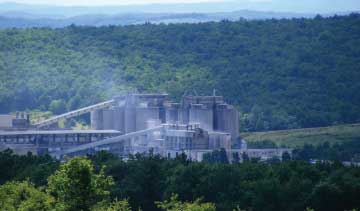Building and Construction Sector: Turning bad air into circular building materials
The global construction market, predicted to grow into a US$1 trillion market within the next decade, shows no signs of slowing down. Across the globe, building super structures has become integral to economic growth agenda.
Oxford Economics, in its new report, Global Construction 2030, has forecast the volume of construction output to grow by 85% to US$15.5 trillion worldwide by 2030, with three countries, China, US and India, leading the way and accounting for 57% of all global growth.
Is the growth, however, worth the environmental risks, given that this sector is one of the world's largest consumers of energy and raw materials?

According to the International Energy Agency's 2019 report, the building and construction sector accounted for 36% of final energy use and 39% of energy and process- related carbon emissions in 2018, with manufacturing building materials and products such as steel, cement, and glass contributing 11%.
Shifting from a linear to a circular economy is proposed as a viable solution in the throes of conscionable production and consumption. In general, the circular economy encourages the reuse and recycling of resources, thereby lowering carbon emissions from the production of new materials.
Emerging technologies that use carbon dioxide (CO2), on the other hand, are creating environmentally friendly materials for industries with a high carbon footprint, such as the building and construction industry. It may sound like an oxymoron, but in the circular economy, all wastes, including carbon emissions, are resources.
From carbon emissions to green materials
"If you can't beat them, join them," as the saying goes, may apply to reducing carbon emissions from the construction sector through the use of carbon capture and storage (CCS), a technology that converts stored carbon into building materials.
Carbon capture technology has been used to separate CO2 from methane gas found in natural gas reservoirs since the 1920s. More advanced carbon capture plants have built on the success of earlier carbon capture plants used for boosting oil recovery and as part of gas field development.

For those taking an interest in CCS, however, it is not all rainbows and unicorns. While CCS is currently the only technology that can help reduce emissions from large industrial facilities, the capture process, including deployment and energy, is costly. To extract, pump, and compress CO2, a plant with CCS uses more fuel than one without, as explained in an article by theLondon School of Economics (LSE).
Despite this, CCS's use in other carbon-intensive industries has continued to grow. CCS is also being used to manufacture circular materials for the construction industry. It is no surprise that it is attracting hefty investments, such as from the US Department of Energy (DOE), which has earmarked US$45 million in CCS technologies for building materials.
The “Harnessing Emissions into Structures Taking Inputs from the Atmosphere” (HESTIA) project will receive US$41 million from the DOE's Advanced Research Projects Agency-Energy (ARPA-E) for the development and demonstration of net carbon negative building materials and whole-building designs; and building life cycle analysis tools and frameworks associated with carbon drawdown and storage in building construction will be developed with US$4 million.
DOE reasoned that the development of new technologies that can transform buildings into net carbon storage structures will reduce CO2 emissions from the atmosphere during the development and manufacture of building materials.
(PRA)
Subscribe to Get the Latest Updates from PRA Please click here
©2022 Plastics and Rubber Asia. All rights reserved.

©2022 Plastics and Rubber Asia. All rights reserved.
Home Terms & Conditions Privacy Policy Webmail Site Map About Us



















